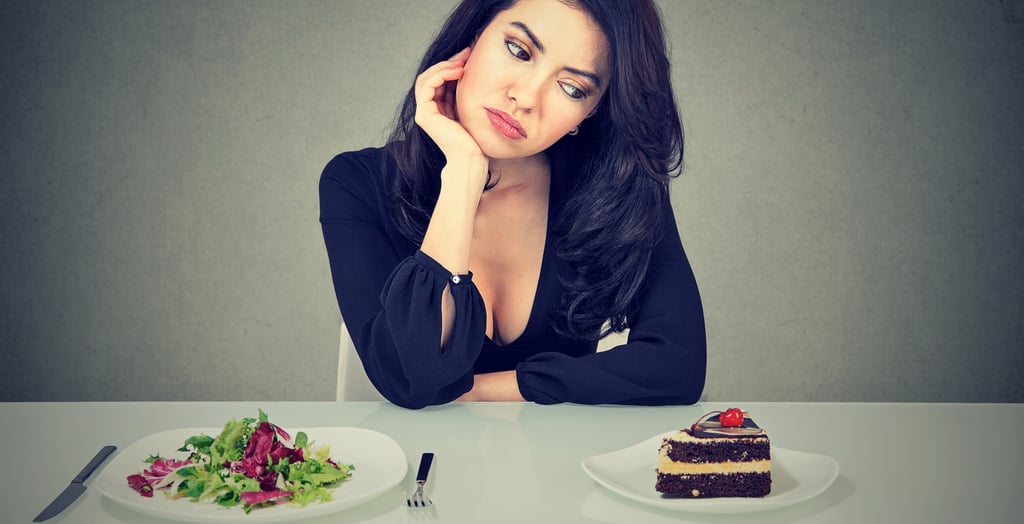Understanding Food Cravings: What They’re Really Telling You — and Ways to Make Peace With Them


Craving chocolate after lunch? Chips late at night? Or something spicy when you’re stressed? You’re not alone. Food cravings are one of the most common — and misunderstood — experiences in our relationship with eating.
Many people think cravings are simply a sign of weak willpower. In truth, they’re signals. Subtle cues from your body, brain, and emotions trying to tell you something — sometimes physiological, sometimes psychological, and often both.
Let’s unpack what cravings really mean, the science behind them, and how to make peace instead of going to war with them.
What Are Food Cravings, Really?
Food cravings are intense desires for specific foods, distinct from normal hunger. Unlike hunger, which arises gradually and can be satisfied with various foods, cravings are targeted — you want that thing (like a particular snack or dessert) and nothing else seems to do.
Cravings usually stem from a mix of biological, emotional, and environmental triggers, such as:
Physiological needs – Your body may be seeking quick energy, hydration, or certain nutrients.
Hormonal shifts – Changes in estrogen, progesterone, leptin, and ghrelin can heighten cravings, especially in the menstrual cycle.
Emotional regulation – Food becomes a comfort mechanism when we’re stressed, lonely, or bored.
Sensory cues – Smells, visuals, or even memories associated with specific foods can reignite desire.
The Brain Behind the Craving
Cravings light up the reward centers of the brain — particularly the nucleus accumbens and orbitofrontal cortex. These are the same areas activated by pleasurable stimuli like music or laughter.
When you eat a “craved” food, dopamine — the feel-good neurotransmitter — surges. Over time, the brain begins to anticipate that reward even before eating, which is why simply seeing a food ad can trigger desire.
But here’s the key: this reward response doesn’t mean you’re addicted. It means your brain has learned that certain foods bring comfort or pleasure — and it’s seeking that feeling again.
What Your Cravings Might Be Telling You
Cravings often have clues. Understanding them can help you respond intelligently rather than react impulsively.
1. Craving something sweet?
This can signal low blood sugar, fatigue, or emotional depletion. When energy dips, your brain calls for quick glucose — the simplest fix being sugar.
Try this: Pair fruit with protein (like an apple with peanut butter) or a small piece of dark chocolate after meals.
2. Craving salty foods?
This may arise after sweating, dehydration, or inadequate mineral intake (especially sodium or chloride). Stress also increases adrenal demand, which can heighten salt cravings.
Try this: Drink water first, add a pinch of rock salt to lemon water if dehydrated, or choose lightly salted nuts instead of chips.
3. Craving carbs or comfort food?
This usually relates to serotonin — your mood-balancing neurotransmitter. Carbs temporarily raise serotonin, hence their comforting effect.
Try this: Opt for complex carbs like oats or sweet potatoes. Pair with lean protein to stabilize blood sugar and mood.
4. Craving chocolate?
Besides the pleasure factor, it could indicate low magnesium — a mineral essential for mood and muscle relaxation.
Try this: Have a small piece of dark chocolate (70%+ cacao) or include nuts, seeds, and leafy greens in your diet.
5. Craving spicy or crunchy foods?
These are often linked to stimulation and stress relief. The “kick” of spice or crunch gives a sense of release and excitement.
Try this: Add spices like chili, ginger, or black pepper to balanced meals; include crispy roasted chickpeas or veggie sticks for crunch.
Emotional vs. Physical Cravings — How to Tell the Difference
Physical hunger builds gradually, feels in the stomach, and can be satisfied with a variety of foods.
Emotional cravings, on the other hand, come suddenly, target specific foods, and are often accompanied by feelings like stress, sadness, or boredom.
A quick test:
Ask yourself, “Would I eat an apple right now?”
If the answer is no, but you’d still eat chocolate or pizza — it’s probably emotional.
And that’s okay. The key isn’t to suppress it but to understand what you’re soothing.
How to Make Peace With Cravings
Pause before reacting
Take a moment to notice the craving. Where do you feel it — stomach, mouth, or mind? Awareness itself can defuse impulsivity.Don’t label foods as ‘good’ or ‘bad’
The stricter the rule, the stronger the rebellion. Restriction amplifies cravings, while permission softens them.Eat balanced, satisfying meals
Include protein, fiber, and healthy fats in every meal — this stabilizes blood sugar and reduces sudden cravings.Identify emotional triggers
Keep a “craving journal” for a week — jot down when and what you crave, and what’s happening emotionally at that time. Patterns often reveal themselves.Stay hydrated and rested
Dehydration and fatigue mimic hunger. Sometimes your body just needs water or rest, not food.Savor the food mindfully
When you do eat what you crave, eat it slowly. Notice texture, taste, aroma. Paradoxically, mindful indulgence reduces overindulgence.Practice compassion, not control
Cravings don’t make you weak — they make you human. When met with curiosity instead of guilt, they lose their power to control you.
What the Research Says
Studies show that stress-induced cravings are linked to cortisol fluctuations and emotional eating tendencies.
Mindful eating interventions significantly reduce craving intensity and binge episodes. (Appetite, 2019)
Regular, balanced meals with sufficient protein and fiber reduce frequency of sugar and fat cravings. (Nutrients, 2021)
The Takeaway
Cravings are not your enemy — they’re messengers. Sometimes they signal a nutrient need, sometimes an emotional void, and sometimes just the desire for pleasure.
When you stop fighting them and start listening, you build a healthier, more peaceful relationship with food — one that honors both your biology and your emotions.
In short:
Make peace with your cravings. Feed your body with balance. And nourish your emotions with kindness.
Because harmony with food doesn’t come from perfect control — it comes from conscious connection.
References
American Psychological Association. (2022). Cravings and emotional eating: What you need to know. Retrieved from https://www.apa.org/topics/eating-disorders/cravings
Blechert, J., Meule, A., Busch, N. A., & Ohla, K. (2014). Food-pics: An image database for experimental research on eating and appetite. Frontiers in Psychology, 5, 617. https://doi.org/10.3389/fpsyg.2014.00617
Cameron, J. D., & Doucet, É. (2012). Getting to the bottom of feeding behavior: Who’s on top? Applied Physiology, Nutrition, and Metabolism, 37(1), 39–47. https://doi.org/10.1139/h11-128
Chambers, E. S., Bridge, M. W., & Jones, D. A. (2009). Carbohydrate sensing in the human mouth: Effects on exercise performance and brain activity. Journal of Physiology, 587(8), 1779–1794. https://doi.org/10.1113/jphysiol.2008.164285
Cornier, M. A., Salzberg, A. K., Endly, D. C., Bessesen, D. H., Tregellas, J. R. (2010). Sex-based differences in the behavioral and neuronal responses to food. Physiology & Behavior, 99(4), 538–543. https://doi.org/10.1016/j.physbeh.2009.12.008
Gibson, E. L., & Green, M. W. (2002). Nutritional influences on cognitive function: Mechanisms of susceptibility. Nutrition Research Reviews, 15(1), 169–206. https://doi.org/10.1079/NRR200131
Macht, M. (2008). How emotions affect eating: A five-way model. Appetite, 50(1), 1–11. https://doi.org/10.1016/j.appet.2007.07.002
Pelchat, M. L. (2009). Food addiction in humans. Journal of Nutrition, 139(3), 620–622. https://doi.org/10.3945/jn.108.097816
Reichelt, A. C., & Rank, M. M. (2017). The impact of junk foods on the adolescent brain. Birth Defects Research, 109(20), 1649–1658. https://doi.org/10.1002/bdr2.1178
Torres, S. J., & Nowson, C. A. (2007). Relationship between stress, eating behavior, and obesity. Nutrition, 23(11–12), 887–894. https://doi.org/10.1016/j.nut.2007.08.008
